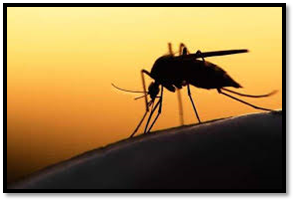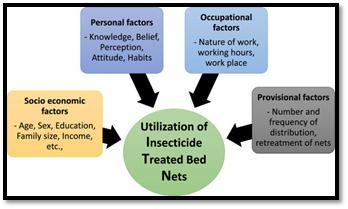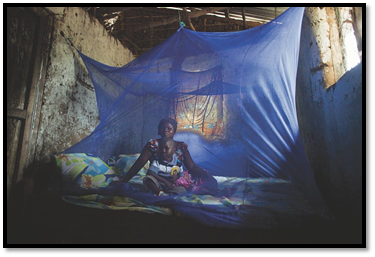
Today when the world is grappling with a coronavirus scare, not long ago there was a time when we were fighting with ‘malaria’ as well. Even today, nearly 40% of the world’s population is still at a risk, especially those living in the poorer countries. The immediate response to malaria has been the extensive use of ITNs i.e. Insecticide Treated Nets. If you think for a moment you would hardly find any correlation between bed-net use and the economy. Very often in economics we come across some indicators which might look insignificant but are actually quite effective. This is one such indicator.
Facts and Evidences
According to a cross-sectional study conducted in a medical research unit of Sub-Saharan Africa located at around 80 km from the equator, the implementation of ITNs is supposedly very low. The installation of bed nets was pretty high but the conditions of use was not. Also the bed nets which were in use were categorized into two. Sufficient and insufficient i.e. if the bed net had holes then it was categorized as insufficient and vice-versa. This categorization was distant from the nets being treated or not. This is where most of the problems of the world go unresolved. The issue of correct implementation and cross-checking. Here, bed-nets were provided to a large number of families but what lacked was the routine check-up of whether they were efficient enough or whether they were judiciously utilized or not. A questionnaire mode of survey was conducted where respondents were not prompted. The interview took place at the home of the respondents where both the mother and child were interviewed. The economic score and social scores were recorded later on. It was known that the knowledge about the A questionnaire mode of survey was conducted where respondents were not prompted. The interview took place at the home of the respondents where both the mother and child were interviewed. The economic score and social scores were recorded later on. It was known that the knowledge about the transmission of malaria disease was very good amongst the respondents. But the preventive behaviour and prophylactic means to prevent the disease was around 88%. It was also observed that one bed net was used by three people i.e. a couple and their youngest child. Most of the nets which were evaluated during the study were UTNs i.e. Untreated Nets.

The various socio-economic indicators which framed the major part of the research were:
- Living conditions like, possession of freezer, television etc.
- The presence of electricity and freshwater in the house
- Monthly income above 150 Euros
The social indicators being:
- The respondent mother being a skilled labourer or not
- Partner of the respondent being the biological father of the study child or not
- Number of children living in the household should not be above four
Besides these indicators there are also issues of over-crowding, more people living under one roof leading to inequality in the usage of bed nets, poor quality of housing, frequent travelling from one place to another and also if the mother has received formal education or not.
Results
The results of this study were quite surprising. Only around 70% of the bed-nets in use were in good condition. Out of these only 6.4% were infused with insecticides. When asked, the respondents were willing to take part in an infusion of insecticides but if provided for free. Not only that, a population of around 37% did not use bed nets out of which 18% could not use because of economic reasons. Their response towards protecting themselves from malaria was the use of ventilators or air conditioners.
According to the socio-economic score, respondents belonging to the most affluent group did not use bed-nets as compared to the middle and poorer groups. There was an inclination towards prophylactic behaviour in groups who had better knowledge about the disease.
Inference
Socio-economic disparity is quite prevalent even today. People with high socio-economic status have better access to healthcare facilities and reportedly worse health. There are a few countries where these disparities don’t exist. But the underdeveloped and developing countries still face this as a major obstacle in order to make resources more accessible. ITNs are considers as an inferior good for them because they have other options available for protection. A 10% reduction in the cost of ITNs would automatically lead to a 20-30% increase in demand for them.

Those in the lower socio-economic strata are more price-sensitive than those in the higher. History has been a witness that health, poverty and economy have been closely linked. Reduction in the number of diseases will bring about economic prosperity to large number of communities. An intervention from the supply side is vital to ensure at what level prices are lowered, tariffs, taxes removed from disease prevention items like ITNs. The prosperity of any economy depends on identifying mechanisms which ensure that even the poorest of the poor have access to healthcare facilities.
Bibliography
https://malariajournal.biomedcentral.com/articles/10.1186/1475-2875-3-6
https://www.ncbi.nlm.nih.gov/pmc/articles/PMC235891
Written by: Bharvi Dani
